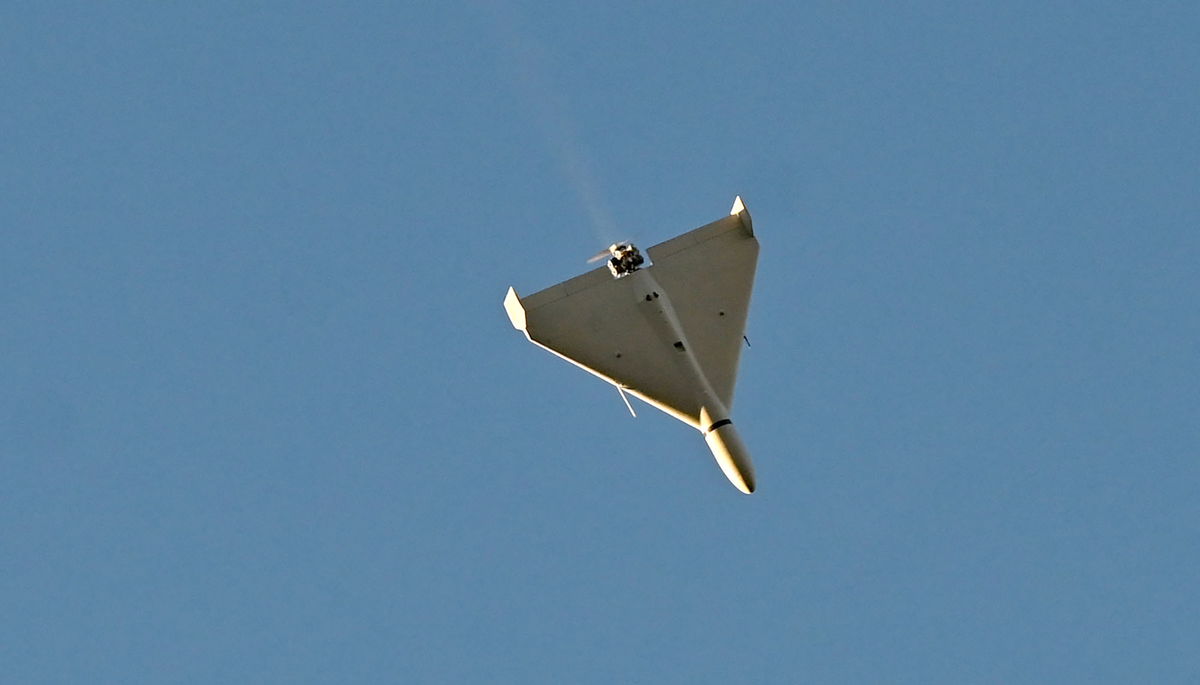Exclusive: Iranian drones appear to contain modified explosives designed for maximum damage to Ukrainian infrastructure, report finds

A drone flies over Kyiv during an attack on October 17
By Natasha Bertrand
Iran appears to be modifying the attack drones it’s providing to Russia so that the explosive warheads can inflict maximum damage on infrastructure targets inside Ukraine, according to a new investigative report obtained exclusively by CNN.
Iran has given Russia hundreds of drones to use in its war in Ukraine, many of which have targeted Ukraine’s power grid and energy facilities to devastating effect. The drone attacks, as well as barrages by Russian missiles, have left Ukrainian civilians across the country without heat, electricity or running water during the freezing winter months.
An unexploded warhead from an Iranian Shahed-131 drone found in the Southern Ukrainian region of Odesa in October 2022 was examined last month by the UK-based investigative organization Conflict Armament Research, along with the Ukrainian military. CAR provided its findings first to CNN.
The composition of the warhead helps explain how Russia’s onslaught on Ukrainian energy infrastructure over the last several months has proven so effective.
The group’s analysts believe the warheads, which measure just under two-feet long, were hastily modified with poorly fitted layers of dozens of small metal fragments that on impact scatter across a large radius. In addition to the fragments, there are also 18 smaller “charges” around the circumference of the warhead that, when melted by the blast, can pierce armor and create a kind of “360-degree” explosive effect.
The accumulation of those elements essentially maximize the warhead’s ability to shred targets such as power stations, distribution grids, transmission lines and large, high-power transformers. They also make repair efforts substantially harder.
“It’s as though they looked at the finished warhead and said, ‘How can we make this even more destructive?'” said Damien Spleeters, one of the investigators who examined the warhead.
At one point in October, Ukraine’s state power generator, Ukrenergo, said that about 40% of normal electrical supply was offline as a result of the Russian barrages. And the damage is happening much faster than Ukraine can repair it — Sergey Kovalenko, CEO of power supplier YASNO, told CNN in December that “Ukrainians will most likely have to live with blackouts until at least the end of March.”
Warheads targeting battlefield assets such as tanks or artillery pieces might be designed differently, Spleeters explained, with a frontal shaped charge that is used for more concentrated targets. The warhead examined by CAR, though, has a radial shaped charge effect, which can result in a larger area of impact.
As CNN has previously reported, Iranian-made drones being deployed in Ukraine have been found to contain a significant amount of US and Western components, leading the Biden administration to investigate how American-made technology is ending up in the weapons.
Spleeters told CNN that examining the Shahed-131 warhead — the components of which have never been publicized before now — has helped analysts better understand how Iran has been manufacturing its drones.
“There had been a lot of speculation that perhaps these explosives were very crude, cheap and simple,” he added. “But looking at the warhead, it is clear that a lot of thought has been put into making sure that it can inflict as much damage as possible to infrastructure in a large radius.”
Last month, the Institute for the Study of War found that Russian forces had become increasingly reliant on the drones in their campaign against Ukrainian critical infrastructure — so much so that their stockpile of the drones is already running low, just months after Iran began sending them.
Russia and Iran have agreed to set up a drone manufacturing facility inside Russia, however, which Western officials believe will allow Russia to replenish its supply more quickly.
The-CNN-Wire
™ & © 2023 Cable News Network, Inc., a Warner Bros. Discovery Company. All rights reserved.
